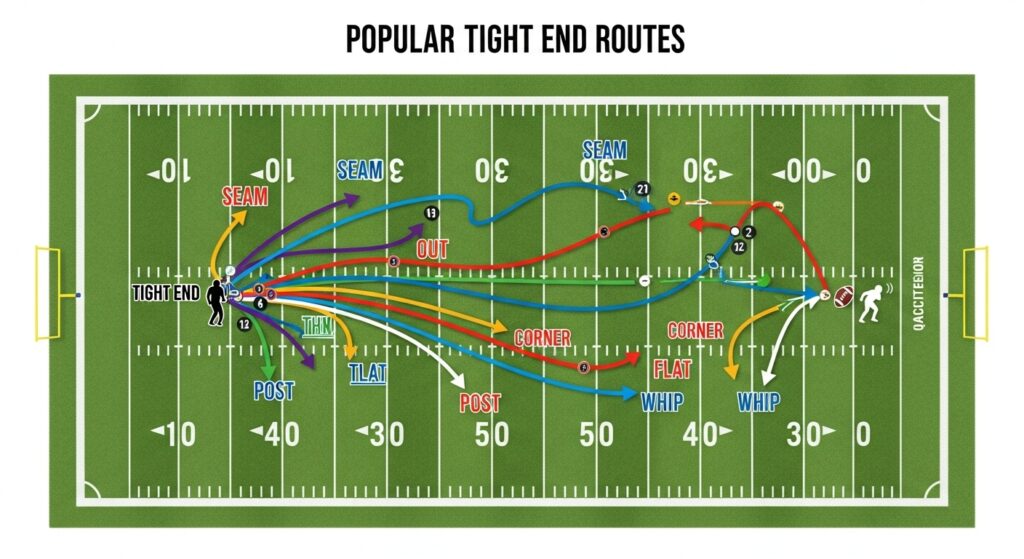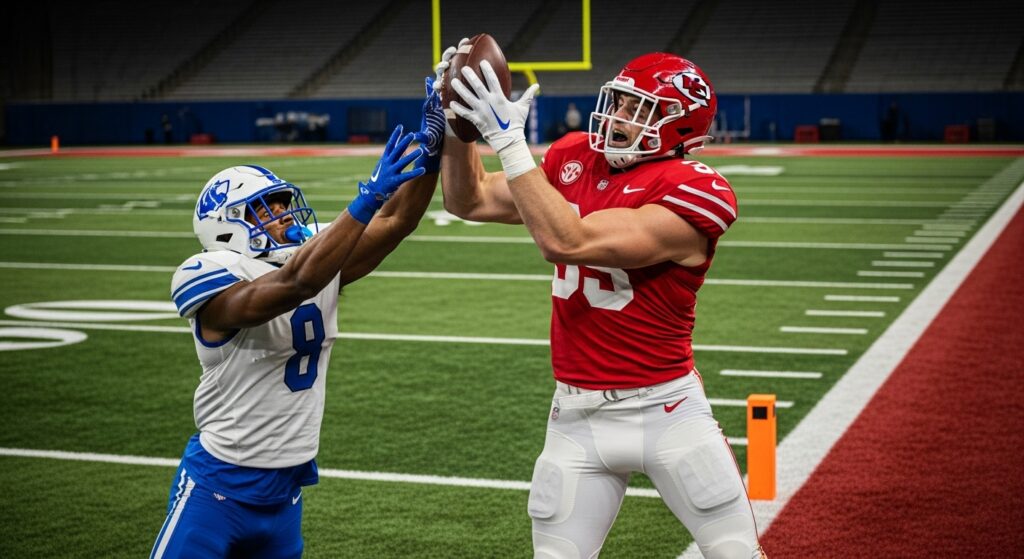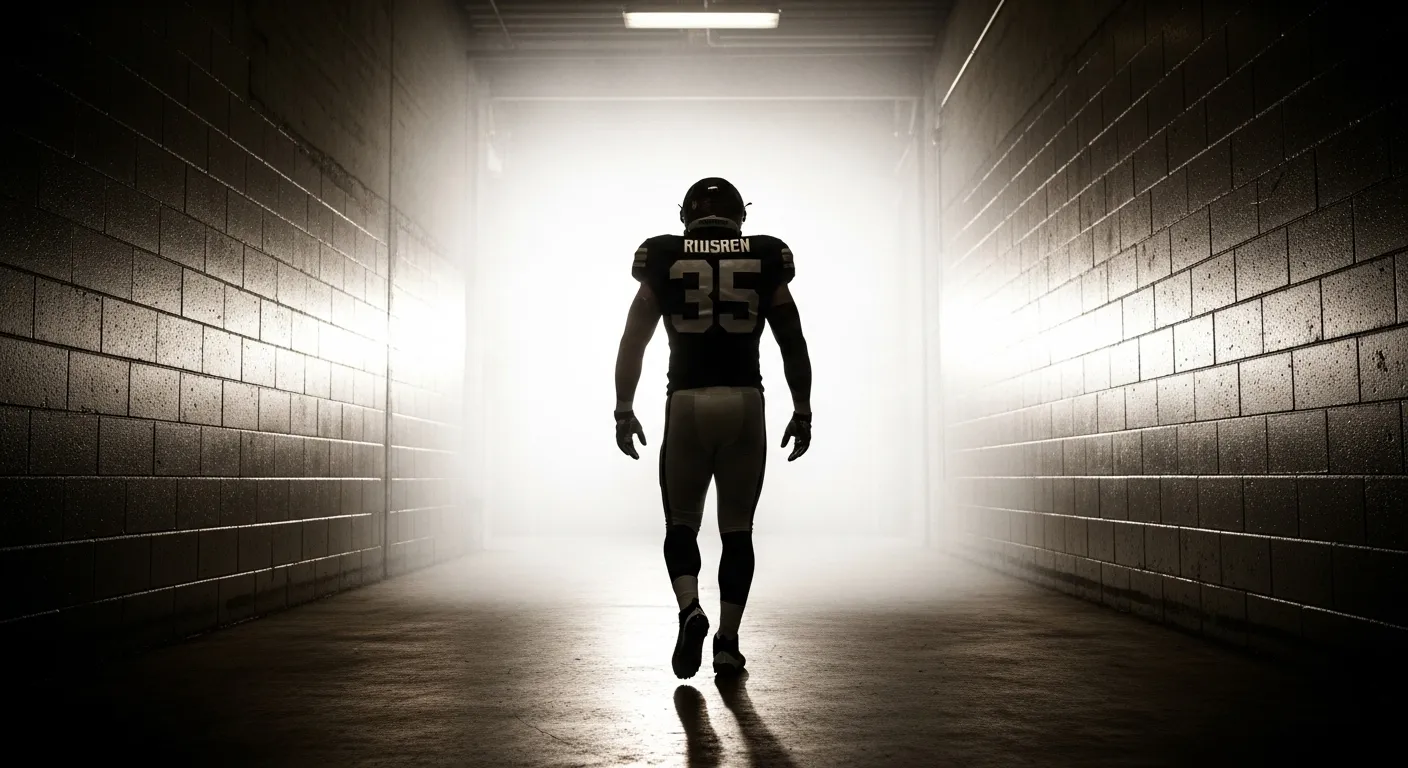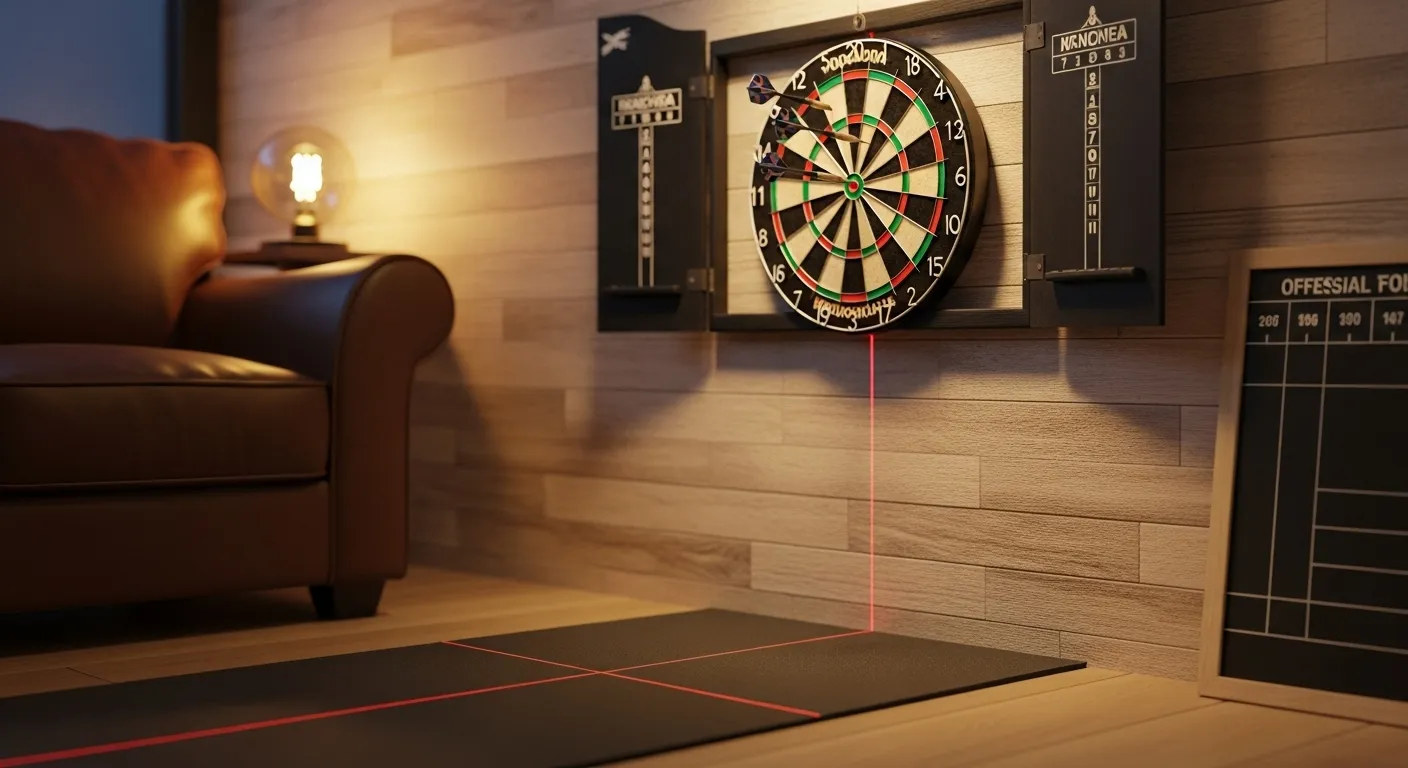When people first stumble into football, they usually ask the same thing: what does a tight end do and why does everyone talk about them like they’re part superhero, part construction worker, and part wide receiver who decided to eat an extra 20 pounds of protein a day? Honestly, it’s hard to explain the tight end position without sounding like you’re describing three different players mashed into one. But that’s kind of the charm of it. The tight end role isn’t neat. It’s messy and versatile and weirdly essential.

The tight end spot is one of those positions that looks simple on TV, just another big guy jogging around, but once you dig into it, the role opens up like one of those “hidden features” videos where suddenly you realize you’ve been missing half the game.
And honestly, that’s probably why this topic gets searched so much. People see Travis Kelce barreling through a defense or George Kittle blocking like he’s auditioning to play left tackle, and they wonder how one position can do all that without breaking in half.
What Does a Tight End Do? The Tight End Position Explained
What does a tight end do? The tight end position is a true hybrid role by design. Part of the job is brute-force blocking, another part is running clean pass routes, and sometimes—depending on the offensive scheme—a tight end becomes the quarterback’s best friend in the middle of the field. If you’re interested in breaking down player roles even further, check out our full section on Match Analysis.
The truth is, tight end responsibilities can shift wildly from team to team. One coach might want a massive blocking tight end who rarely leaves the line of scrimmage. Another coach may prefer a shifty receiving tight end, lining up more like a big slot receiver—a concept similar to understanding other specialized plays like a Hail Mary pass.
Some teams even use multiple tight ends simultaneously, creating a chaotic but strategic formation. Understanding these variations is crucial for anyone learning how different positions influence the outcome of a game—much like grasping essential rules such as what a safety is.

If you put it in simple terms, a tight end sits right between the offensive tackle and the wide receiver because that’s exactly who they are: half lineman, half receiver. And yeah, that means twice the work.
Tight End Responsibilities (They Do More Than Fans Realize)
Most positions have a straightforward job description. Tight ends? Nope. They have a checklist.
Here are the core tight end responsibilities:
- Block defensive ends, outside linebackers, and sometimes interior linemen.
- Run short-to-intermediate tight end routes (flats, outs, posts, seams, stick routes, etc.).
- Pass protect when the offensive tackle needs help.
- Seal edges on outside running plays.
- Catch passes in traffic, often with defenders draped on them.
- Occasionally line up in the slot or even out wide.
- Sometimes chip blocks, then slip into the open field for a catch.
- Act as a safety valve for the quarterback.
And depending on the scheme, the tight end is either the quiet unsung hero… or the offense’s Swiss Army knife.
Tight End Routes Aren’t Just Random Short Routes
People think tight ends only run those five-yard stick routes where they turn around and wait for a pass. But tight end routes actually have a whole system of their own. Seam routes, in particular, are money plays, those vertical lanes between the linebacker and safety. Teams love them because tight ends can body up smaller defenders or outrun slower ones.
Common Tight End Routes (Quick Table)
| Route | Description |
| Flat | Short, simple route into the flat area. Safety valve stuff. |
| Seam | Vertical route between LB and safety; big play threat. |
| Stick | Quick 5-yard curl; used constantly in spread offenses. |
| Out | Edge-breaking route to create separation on linebackers. |
| Corner | Route breaking toward sideline; great vs zone. |
| Cross | Horizontal route across the field; used in play-action. |
These routes take timing and a feel for spacing, which is why older tight ends often age well. Smarts matter.

The Difference Between a Blocking Tight End and a Receiving Tight End
Every tight end falls somewhere on the spectrum between these two extremes:
1. Blocking Tight End:
This is the big, bruising type of tight end—the players who look like offensive linemen but can still catch the ball if absolutely necessary. Their primary job is to survive in the trenches and open running lanes. When you see a huge gap form on an outside run, it’s often because a blocking tight end just shoved a defender out of the frame.
These physical specialists are crucial in traditional, power-focused offenses and are deeply connected to classic football fundamentals, much like the traits seen in football legends across positions.
2. Receiving Tight End:
These are the more athletic, dynamic tight ends, used like oversized wide receivers who can also block “well enough.” They are quick enough to outmaneuver linebackers and tall or strong enough to win jump balls against safeties.
Modern offenses love these hybrid playmakers because they create defensive mismatches, forcing opponents to adjust their coverage schemes. This versatility is also part of what shapes today’s evolving matchday culture, where fans celebrate innovative roles and unpredictable offensive designs.
Tight End vs Wide Receiver (They Aren’t Even Close Physically)
This is one of those debates that comes up every season, tight end vs wide receiver, and it’s not even a fair comparison physically.
| Position | Typical Size | Primary Role |
| Tight End | 6’3″–6’6″, 240–265 lbs | Block + catch, hybrid duties |
| Wide Receiver | 5’10″–6’3″, 180–205 lbs | Route running and catching |
Wide receivers live on finesse and timing. Tight ends live on controlled violence and leverage with some route-running sprinkled in. Completely different athletic profiles.
Tight End vs Fullback (Another Confusing Comparison)
Many fans still wonder what does a tight end do when comparing the position to a fullback. The tight end vs fullback debate exists because both line up near the formation and both handle a heavy amount of blocking, but their roles are very different.
A fullback is essentially a short-range battering ram who clears lanes for the running back. A tight end, on the other hand, is a multi-tool player. If you’re asking what does a tight end do, the answer includes protecting the edge, running routes, catching passes, and occasionally becoming a primary offensive weapon.
Some teams even blend the two roles into an “H-back,” which is basically a mobile tight end who can shift into the backfield depending on the play design.

How Tight Ends Block (More Technical Than You Think)
Blocking is where casual fans underestimate tight ends the most. It’s not enough to be big. You need technique. Leverage. Footwork. Timing. And honestly, humility, because blocking isn’t glamorous.
Key Tight End Blocking Techniques:
- Drive Blocking: Push your defender straight back.
- Down Blocking: Angle inward to seal the defender.
- Kick-Out Blocking: Hit the edge player to widen the running lane.
- Reach Blocking: Step around the defender to seal them off from the play.
- Chip Blocking: Quick hit before releasing into a route.
Good blocking tight ends don’t get enough credit. When a running back breaks loose on the outside, a tight end probably paved the way quietly.
Tight End Formations (More Variations Than Most Positions)
Tight ends move around the formation like chess pieces. Coaches place them where they create the best mismatch.
Common spots:
- Inline (traditional spot next to the tackle)
- Slot (like a big receiver)
- Wide split (rare but dangerous)
- Backfield (as an H-back)
- Stacked beside another tight end
- Motioning pre-snap to confuse defenses
Motioning is especially effective because defenses must adjust instantly. A tight end shifting sides forces linebackers to rotate, which often opens up a running lane or a mismatch.
NFL Tight End Duties (The Real Job Description)
If you want the blunt version, NFL tight end duties include doing everything nobody else wants to do while also making big plays.
Some teams ask tight ends to:
- Block 280-pound defensive ends
- Catch passes in tight windows
- Help chip superstar pass rushers
- Run crisp routes despite being 250+ pounds
- Act like a slot receiver on third downs
- Serve as a red-zone threat
- Play special teams
- Lead block in certain formations
It’s a laundry list. No other skill position gets asked to do this much… and that’s why the NFL values tight ends who can do all of it without needing to come off the field.
Best Tight Ends in the NFL (Right Now)
There’s always debate, but a few names keep popping up because they dominate in different ways.
Top Current Tight Ends
- Travis Kelce: The definition of elite route running for tight ends.
- George Kittle: The all-around monster who blocks like a lineman and runs like a receiver.
- Mark Andrews: Tough, physical, reliable.
- T.J. Hockenson: Strong hands, consistent yards-after-catch.
- Dallas Goedert: One of the most balanced in the league.
And historically, you’ve got Tony Gonzalez, Rob Gronkowski, Shannon Sharpe, Antonio Gates. Each redefined the position in a different era.
Tight End Skills Needed (It’s a Long List)
The tight end role demands an unusual skill set:
- Size and strength
- Reliable hands
- Footwork like a lineman
- Enough speed to separate
- Field awareness
- Physicality to block edge defenders
- Ability to adjust to different roles every drive
- Willingness to take hits
- Endurance, because they rarely come off the field
Tight end body type is another conversation. These players are built thick but flexible. Usually tall enough to win jump balls but stout enough to block.
In simpler terms:
You can’t be soft and play tight end. The job will expose you instantly.

How to Play Tight End (If You’re New or Curious)
If someone wants to learn how to play tight end, the best mindset is accepting that you’re learning two positions at once. Maybe even three.
You need to understand:
- Offensive line blocking rules
- Receiving concepts
- Defensive coverage tendencies
- How to adjust routes
- Where the open windows are
- Where the quarterback expects you
- When to chip block before releasing
Beginners usually start with the basics: learn to block well enough to get on the field… then grow into the receiving role as your body develops.
Tight End Training Drills (Real Ones Players Use)
Training varies depending on what kind of tight end a team wants, but these drills stand out as essentials:
Key TE Drills:
- Hand Placement Drills – to improve blocking accuracy
- Sled Pushes – simulate run blocking
- Route Trees – multiple reps to build muscle memory
- High-Point Catch Drills – win contested balls
- Footwork Ladders – surprisingly helpful for agility
- Leverage and Angle Drills – especially for edge blocking
Some tight ends even train with offensive linemen and wide receivers on the same day. That’s how broad the skill set is.
Tight End in Football Explained (The Simplest Breakdown)
If you peeled away all the advanced schemes and coaching jargon, a tight end’s job boils down to this:
Be strong enough to block like a lineman and skilled enough to catch like a receiver, without coming off the field.
They’re the glue that keeps an offense together. Not always flashy, but always essential.
Tight End Offensive Schemes (They Change Everything)
Coaches design offenses around tight end strengths. A great tight end can transform a playbook overnight.
Examples:
- 12 Personnel (1 RB, 2 TEs) opens run lanes and creates mismatch passing attacks.
- 13 Personnel is used for power football.
- Spread Schemes use athletic tight ends as big slot receivers.
- Play-Action Systems rely heavily on tight ends slipping behind linebackers.
Tight ends bend defenses. They force coordinators to pick which weakness they’re willing to live with.
Pass-Catching Tight Ends (The Modern Era)
The rise of pass-catching tight ends changed football. Teams used to value tight ends for blocking first. Now? If you can catch and run after the catch, you’re in high demand.
Teams design entire red-zone packages around tight ends because of their size advantage.
This shift also pushed defenses to find bigger hybrid safeties and more athletic linebackers, all because tight ends became too skilled to ignore.
Picking up where we left off… the tight end role keeps evolving every season, almost like the league is trying to figure out just how much one position can handle without needing a small army behind it. And honestly, the way offenses experiment with tight ends now feels like a laboratory sometimes. You’ll see formations that didn’t even exist twenty years ago, all because some coach realized, “Hey… our tight end is fast enough to beat a linebacker but strong enough to block a defensive end. Let’s move him around and see what breaks.”
That’s the excitement of the position, it shapes the game in ways you don’t always see right away.

Why Tight Ends Are Becoming More Important Than Ever
We’re in an era where most NFL defenses are built to stop speed, lightweight linebackers, hybrid safeties, nickel packages on most downs. So what happens when you place a 255-pound tight end who runs a 4.6 forty against a 215-pound nickel corner or a slower linebacker?
Exactly. Mismatched city.
This mismatch-heavy style pushes offensive coordinators to design plays specifically to isolate tight ends, forcing the defence’s weakest link to try and survive. The tight end doesn’t have to be the fastest. They just need to be big enough, crafty enough, and smart enough to exploit the coverage.
And because of this, tight ends are stepping into roles that used to belong to slot receivers and even fullbacks.

Why Most Tight Ends Take Years to Develop (Not Like Wide Receivers)
Fans often wonder why rookie tight ends rarely dominate right away. And the reason is painfully simple, they’re being asked to learn two or three jobs at once. A rookie wide receiver only needs to worry about the route tree and timing. A rookie offensive lineman only needs to master blocking rules.
But a rookie tight end?
They get dumped into meetings with the offensive line coach and the receivers coach… and sometimes the running backs coach too. It’s a lot.
Some tight ends don’t fully “click” until their third or fourth year. It might sound like a long time, but once it clicks, they become one of the most valuable pieces on the roster.
More About Tight End Body Type (Why They Look the Way They Do)
If you’ve ever wondered why tight ends look like they were built from the same template, here’s the honest breakdown:
- Tall enough to be passing targets
- Heavy enough to block
- Lean enough to move
- Strong enough to hold their ground
- Agile enough to run sharp routes
- Broad-shouldered for leverage
- Long-armed for catching radius and blocking reach
It’s an awkward mix of traits that takes time to build. Most tight ends don’t even reach their full NFL playing weight until a couple of years into the league.
The body type is basically a compromise between being a tank and being an athlete, and somehow it has to work for both roles at the same time.

How Coaches Use Tight Ends to Manipulate Defenses
One of the coolest things about the tight end spot is how subtly coaches use it to manipulate defenders. It’s not always flashy, but it’s strategic.
A few sneaky tactics:
- Using tight end motion to identify coverage
- Using an inline tight end to hide a run direction
- Using a slot tight end to force a linebacker into coverage
- Using stacked tight ends to fake run-heavy formations
- Running play-action specifically off tight end blocking looks
- Using tight ends as decoys on bootlegs
If an offense has a versatile tight end, a defensive coordinator basically needs two game plans. One for when he stays inline… and another for when he moves into space.
Tight End Blocking Techniques (Expanded Breakdown)
Earlier we covered the basics, but some of the finer details matter too. For example:
Hand placement:
It’s everything. Too high and you lose leverage. Too low and you get shoved off balance.
Hip drive:
Tight ends need powerful hips to move defenders. If the hips aren’t engaged, the block collapses.
Footwork:
Small choppy steps, stable base, and never crossing the feet. Crossing your feet means disaster, or worse, a defender blowing up your running back in the backfield.
Timing:
They often block players much bigger or quicker than them, so winning the first half-second of contact is huge.
These are the small details fans never see, but they define whether a tight end stays on the field or gets replaced.
Why the TE Position Is So Physically Brutal
Most people think running backs take the most punishment. Fair. But tight ends?
They’re absorbing hits from defensive ends, linebackers, safeties, sometimes multiple levels of the defense on a single play.
Imagine having to block a 270-pound edge rusher on one down, then sprint a seam route on the next, then take a helmet under the ribs while catching a pass across the middle. It’s a grind. Their bodies get beat up.
This is why durability becomes one of the unofficial “requirements” for tight ends. The position is relentless.
Why Tight Ends Matter So Much in the Red Zone
Red zone football gets tight, literally. The field shrinks. Defences sit closer. Everything becomes harder for wide receivers.
Tight ends, however, thrive here.
Why?
- Size advantage
- Catch radius
- Ability to body up defenders
- Short-area route strength
- Better at fighting through contact
You’ll see fade routes, seam routes, and quick outs specifically designed for tight ends inside the 20. Most big touchdown totals among TEs come from this area.
Why Some Tight Ends Become Franchise Cornerstones
Every era has tight ends who shape their teams’ identities.
Teams build around tight ends because:
- They’re match up problems
- They dictate defensive personnel
- They make play-action deadly
- They stabilise both run and pass games
- They extend drives on third down
- They create reliable “comfort throws” for QBs
When you combine size, skill, IQ, toughness, and versatility… you get a player that defenses have to respect on every snap.
Good tight ends change games quietly. Great ones change seasons.

Example of a Tight End’s Role in a Single Drive
Sometimes the best way to understand the position is to follow one tight end through a single drive:
- Play 1: Down block on the defensive end.
- Play 2: Chip block, then release for a five-yard catch.
- Play 3: Pass protect against a blitzing linebacker.
- Play 4: Run a seam route, draw safety help.
- Play 5: Lead block on a sweep.
- Play 6: Motion across formation, fake split zone, catch play-action pass.
- Play 7: Red zone quick out for a touchdown.
That’s seven completely different jobs in less than three minutes. Almost no other offensive position touches that many responsibilities in one sequence.
A Few More Things That Don’t Get Talked About Enough
Tight ends have to be incredibly smart:
They read coverage, adjust routes, understand blocking fronts, and know where to sit in zones.
They need insane stamina:
They hardly leave the field. They line up on run plays, pass plays, special teams, you name it.
They get hit constantly:
Linebackers, safeties, edge rushers, every level of the defence wants a piece of them.
They don’t get paid like wide receivers (usually):
Even though they do more jobs.
All of this builds a position that requires toughness and patience. You don’t see many divas here.
Letting It Taper Off (No Polished Ending, Just Honest Thoughts)
So yeah… explaining the tight end position feels like explaining someone who works two jobs and still ends up doing extra shift coverage on weekends. It’s a grind but also one of the most satisfying roles in football once you understand it.
You watch enough games and you start noticing the little things tight ends do, opening holes without getting credit, absorbing hits without complaining, finding soft spots in zones, or pulling off those gritty chip blocks that give quarterbacks an extra second.
It’s messy work. But it holds everything together.
And after all this, when someone asks what does a tight end do, you almost want to laugh because the answer barely fits into one conversation. Tight ends do… well, pretty much everything.
FAQs (People Also Ask Style)
1. What is the main job of a tight end in football?
Their main job is to block and catch passes, basically acting as a hybrid between an offensive lineman and a wide receiver.
2. Do tight ends need to be fast?
Not wide-receiver fast, but they need enough speed to separate from linebackers and run routes effectively.
3. Why do tight ends line up next to the tackle?
To give the offence flexibility, they can block like a lineman or release like a receiver depending on the play.
4. Can a tight end be the main receiver on a team?
Absolutely. Many offences feature tight ends as primary pass-catching options, especially elite ones.
5. What skills make a good tight end?
Blocking technique, strong hands, route-running IQ, size, balance, and the ability to absorb contact.

I’m Daniel Moore, and I live for the thrill of the game. Get energetic live commentary, detailed match analysis, data-backed betting predictions, and official team rankings right here.



